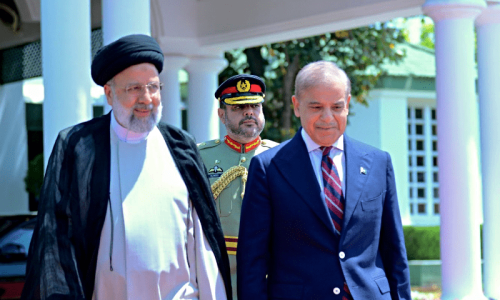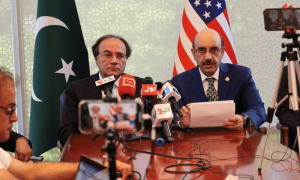With all its historical splendour and ancient treasures, one of Swat’s most important archaeological sites, the Bir-kot-ghwandai, also known as the Bazira of Alexander the Great, welcomes everyone who enters the valley.
This Indo-Greek urban defensive works, which is the easternmost example of Hellenistic military architecture in Asia, is located west of the modern village of Barikot and the site is marked by a steep hill overlooking the Swat River.
From the north, the hill (acropolis) dominates the ancient town site.
The site has been on lease and under excavation by the Italian Archaeological Mission (MAI) since 1984. According to Dr Luca Maria Oliveri, the director of MAI, the town was founded as a fortified settlement when the Indo-Greek rulers expanded their control over Swat, maintained as a military establishment by the Saka-Parthians, and transformed into a real urban centre in Kushan times.
The coincidence between the collapse of the Kushan power and destructive earthquakes eventually marked the end of the town (end of the 3rd century CE).
“The ancient town of Bazira can be considered, together with Sirkap, the most crucial excavated settlement site in the North-West of the Indo-Pak subcontinent,” he said, adding, “The area of the ancient town, excluding the acropolis, measures about seven hectares (one-third the size of Sirkap). The ancient town and part of the acropolis were encompassed within a defensive circuit (hereafter ‘Wall’) featured by massive rectangular bastions.”
The Wall is a massive construction built of pebbles, slabs and clay mortar. It has been dated on the basis of the results of the previous excavation to the second half of the second century BCE spanning to the 4th and 5th century AD. Some of the artefacts spread across the area on the hill and hillsides of the city date back to the proto-Islamic period (13th to 14th century AD).
Unfortunately, the site is owned by several landlords and all the previous governments never showed interest in acquiring the land of this important site. The Italian Mission has paid the lease for the last 25 years (since 1990).
“This is really strange that no government took interest in the archaeological sites of Swat valley. Several important sites have disappeared where people constructed residential buildings leaving mankind deprived of historical records,” said Usman Ulasyar, chairman of the Suvastu Arts and Culture Association.
 |
| A sculpture found in Situ in the niche of a temple. —Dawn |
He lamented the government’s lack of interest in Bazira and said that had the site located in some other country it would have been full of research students, scholars and tourists. “But we are so unlucky nation that the globally important archaeological sites are disappearing day by day and the government doesn’t bother to acquire its land,” he said.
However, the KP’s director of Archaeology and Museums Dr Abdul Samad Khan says that the archaeology department is in the legal process to acquire the land.
“The section-IV of the land along with 11 other sites has been made. Once the government pays to the owners, the department will acquire the land immediately,” he told Dawn.
When contacted, Barikot tehsil assistant commissioner Mohammad Umair said that the section-IV had already been made and handed over to the archaeology department. “We have received the acknowledgement from the archaeology department too,” he said.
About the government’s acquisition of Bazira, Mushtaq Ahmad, one of the landowners, said that he had no objection to the government’s purchasing the land.
However, he said that the land should be acquired at reasonable price. “We request the government to pay the market price of the land so that we do not suffer a heavy loss,” he said.
Presently, the excavation has been stopped at the site after the Archaeology Community Tourism (ACT) Project launched by the Italians was completed successfully in Sept 2014. Meanwhile, the continuation for one year of the ACT Project was finally approved under the Pakistani-Italian Debt Swap Agreement in February this year.
Speaking at the opening ceremony of Swat Museum in Dec 2014, Italian Ambassador Adriano Chiodi Cianfarani and adviser to the chief minister on tourism, archaeology and museums Amjad Khan Afridi announced the continuation of the ACT Project for the year 2015. But, so far the project could not be started because of unavailability of funds.
“If the ACT Project is not continued for one more year its excellent results may be spoiled, while archaeological lands are at risk. This is particularly crucial also because the KP government is finally going to acquire several hundreds of kanals of these archaeological lands in Swat, with a financial effort,” said Usman Ulasyar.
Published in Dawn, May 24th, 2015
On a mobile phone? Get the Dawn Mobile App: Apple Store | Google Play














































